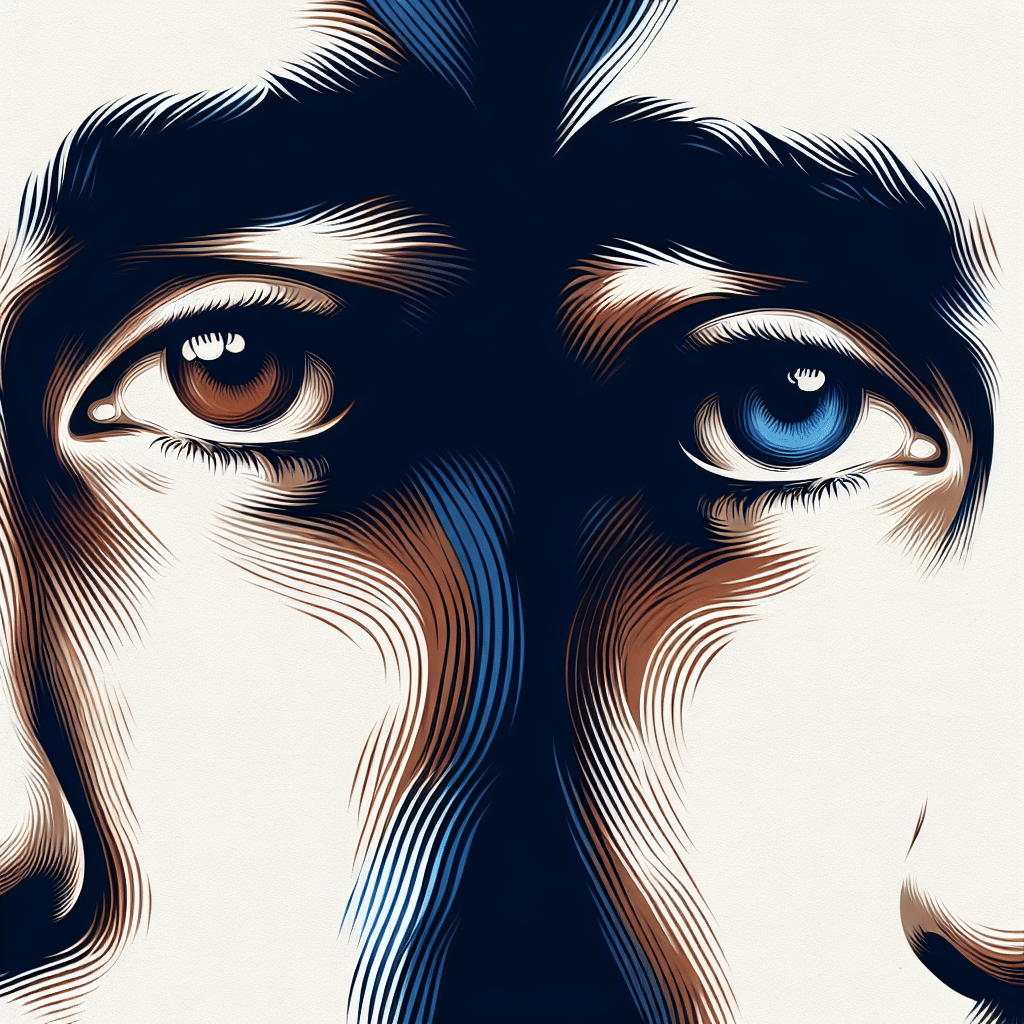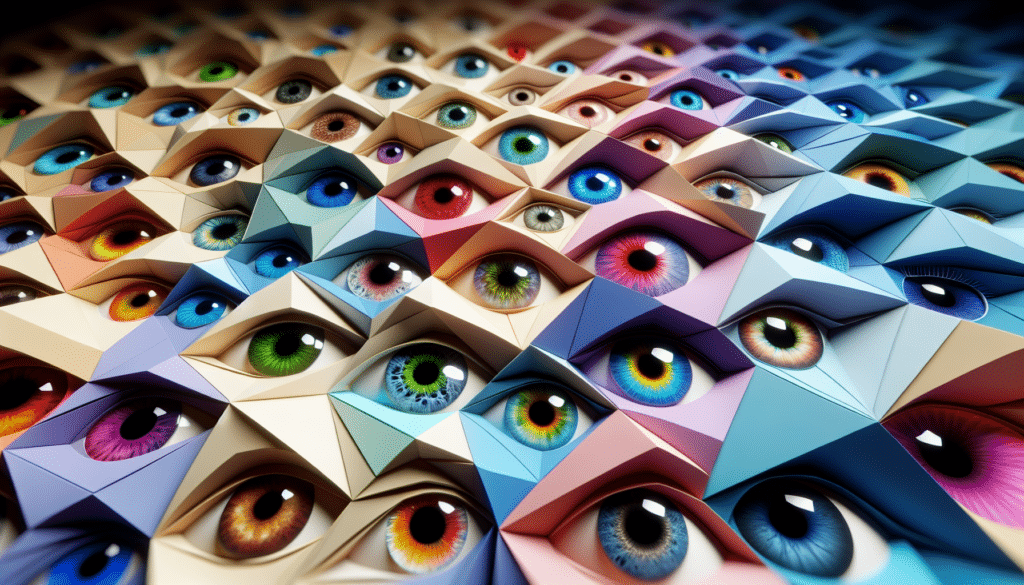David Bowie’s Eye Condition
Anisocoria vs. Heterochromia
David Bowie’s eye condition is often misunderstood as heterochromia, which refers to having two different colored irises. However, Bowie’s unique eye appearance was actually due to anisocoria, a condition where the pupils are of different sizes. In Bowie’s case, this resulted from a teenage injury that left one pupil permanently dilated, giving the illusion of two distinct eye colors. His left eye appeared clear blue while the right eye seemed a darker hue, which contributed to his iconic look The Cut.
Here’s a quick comparison of these two conditions:
| Condition | Description | Example |
|---|---|---|
| Anisocoria | Different-sized pupils; often resulting from injury or medical conditions | David Bowie |
| Heterochromia | Two different colored irises | Mila Kunis (mila kunis eye color) |
The Incident with George Underwood
The incident that caused Bowie’s anisocoria occurred in the spring of 1962 during a fistfight with his friend George Underwood. The altercation stemmed from a dispute over a girl, and Underwood’s punch scratched Bowie’s left eye. This injury paralyzed the muscles that control the iris, resulting in his distinctive eye appearance. The impact of this fight was significant, not only altering Bowie’s vision but also contributing to his unique persona as an artist Radio X.
Bowie’s eye condition became a part of his artistic identity, adding to the mystique that surrounded him throughout his career. This injury and its aftermath have intrigued fans and researchers alike, highlighting how a personal experience can shape an artist’s image and influence their work.
The Unique Eye Appearance
David Bowie’s eye color is one of his most distinctive features, creating an unforgettable look that contributed to his artistic persona. His unique appearance includes one eye that was clear blue and the other that appeared dark, often seen as brown or black. This striking contrast was not due to heterochromia, a condition where a person has two different iris colors, but instead resulted from a condition known as anisocoria.
One Blue, One Dark Eye
The intriguing difference between Bowie’s eyes stemmed from an incident in his teenage years. In 1962, during a fistfight with his friend George Underwood, Bowie sustained an injury to his left eye. This injury paralyzed the muscles that control the iris, resulting in a permanently dilated pupil. While both of his irises were originally blue, the dilation made one eye appear dramatically darker than the other, creating the iconic dual-color effect that defined his look.
| Eye Color | Description |
|---|---|
| Left Eye | Clear Blue |
| Right Eye | Dark (appears brown or black due to dilation) |
Impact of the Teenage Injury
The fight with Underwood not only altered Bowie’s eye appearance but also had lasting effects on his vision. The injury from the punch left his left eye with a fixed, dilated pupil. This incident marked a significant change in his life and contributed to the enigmatic aura that surrounded him.
Bowie’s unique eye condition became a key part of his identity, enhancing his stage presence and artistic image. The story of his injury and its aftermath also adds to the mystique that fans and admirers find so compelling. For individuals interested in other famous personalities with unique eye colors, exploring cases like Mila Kunis, Kate Bosworth, and Henry Cavill can provide further insights into the world of heterochromia and distinctive eye traits.
Understanding Anisocoria
Anisocoria is a condition where a person has pupils of different sizes. This phenomenon can create a striking visual effect, and in David Bowie’s case, it contributed to his unique eye appearance.
Different Pupil Sizes
In Bowie’s situation, his left pupil was permanently dilated, resulting from a teenage injury. This caused a noticeable difference in the size of his pupils, giving the illusion of two different colored eyes. While one eye appeared clear blue, the other seemed darker. Importantly, both of Bowie’s irises were the same color (blue), but the anisocoria made it seem otherwise.
| Eye Condition | Description |
|---|---|
| Anisocoria | A condition characterized by unequal pupil sizes. |
| Normal Pupil Size | Pupils typically should be equal in size, ranging from 2 to 6 mm in diameter under various lighting conditions. |
Causes and Effects
The cause of Bowie’s anisocoria was an injury he sustained during a fistfight with his friend George Underwood in 1962. Underwood accidentally scratched Bowie’s left eye, leading to paralysis of the iris muscles that control pupil size. This injury resulted in a permanently dilated left pupil, which is a key aspect of Bowie’s iconic look (The Cut).
The effects of anisocoria can vary depending on the underlying cause. In Bowie’s case, the condition did not just alter his eye’s appearance; it also contributed to his artistic persona, enhancing the mystique surrounding him as a performer. For more on similar eye conditions, check out our articles on heterochromia and the eye colors of other famous personalities such as Mila Kunis and Kate Bosworth.
Bowie’s Eye Trauma
David Bowie’s eye trauma occurred in 1962 when he was involved in an altercation with his friend George Underwood. The incident left Bowie’s left eye permanently dilated due to a punch from Underwood, which caused a scratch on the eyeball and paralyzed the iris muscles. This condition is known as anisocoria, where one pupil is larger than the other (Smooth Radio).
Hospital Treatment
Following the injury, Bowie underwent two surgical operations and spent several weeks in the hospital. His recovery was extensive, lasting up to four months. Fortunately, Bowie did not lose his eye, but the doctors informed him that he would experience significant vision issues. The vision in his injured eye was described as “hazy,” indicating that although he retained the eye, it would not function as well as before (Focus Clinics).
| Aspect | Details |
|---|---|
| Initial Incident | Altercation with George Underwood |
| Surgery | Two operations |
| Hospital Stay | Approximately four months |
| Vision Outcome | Hazy vision in the injured eye |
Long-Term Vision Effects
The long-term effects of Bowie’s eye injury were significant. While he did not lose his eye, the anisocoria left him with a noticeable difference in pupil sizes. This unique feature contributed to his iconic look and became an essential part of his artistic persona. Bowie himself reflected on the injury positively, expressing gratitude to Underwood for this distinctive characteristic that added to his mystique as a performer (Focus Clinics).
For those interested in learning more about other celebrities with similar eye conditions, consider checking out the eye colors of stars like Mila Kunis and Kate Bosworth.
Bowie’s Eye Incidents
David Bowie, known for his striking eye color and unique appearance, experienced a couple of notable incidents involving his eyes that added to his mystique.
Cigarette Packet Incident
In 1991, while performing on stage, Bowie was struck in the eye by a Marlboro cigarette packet thrown by an audience member. The unexpected incident caused immediate concern, as it directly impacted his left eye. This event not only left a mark on Bowie but also became a part of his intriguing backstory. Such incidents highlight the unpredictable nature of live performances, particularly for famous artists like him.
Lollipop Accident
Another eye-related incident occurred in 2004 during a concert in Oslo, Norway. A lollipop was thrown onto the stage and, unfortunately, lodged itself in Bowie’s left eye. A crew member quickly intervened to remove it, but the unexpected event further emphasized the unique challenges Bowie faced during his performances. These incidents have contributed to the narrative surrounding Bowie’s eye color and his distinctive appearance, offering a glimpse into the sometimes chaotic world of live music.
These eye incidents are part of the larger conversation about heterochromia, which is a rare condition affecting many celebrities. Bowie’s experiences, along with those of other famous individuals, such as Mila Kunis and Kate Bosworth, continue to capture the interest of fans and curious onlookers alike.
Bowie’s Eyepatch Era
During his career, David Bowie was often seen sporting an eyepatch, leading to various misconceptions about his eye condition. This section clarifies those misunderstandings and highlights a specific episode that contributed to his unique visual persona.
Misconceptions Clarified
Many fans initially believed that Bowie had heterochromia, a condition where an individual has two different colored irises. However, it is widely acknowledged that he actually had anisocoria, which is characterized by unequal pupil sizes. This condition resulted from an injury Bowie sustained in 1962 when his friend George Underwood accidentally scratched his eye during a fight, causing his left pupil to remain dilated (Focus Clinics).
The injury not only altered Bowie’s eye appearance but also contributed significantly to his mystique as an artist. His left eye appeared darker compared to the bright blue of his right iris, creating an unforgettable and iconic look that many associated with his persona. Throughout his career, the eyepatch served to enhance this image, often leading to the misconception that he had lost his eye or suffered from serious damage.
Conjunctivitis Episode
In addition to his anisocoria, Bowie experienced episodes of conjunctivitis, which further complicated his eye health. Conjunctivitis, often known as pink eye, is an inflammation of the tissue that covers the inner eyelid and the white part of the eyeball. During these times, Bowie occasionally wore an eyepatch to protect his eye and maintain his public image.
While the eyepatch was frequently associated with an air of mystery, it was also a practical solution to manage his eye conditions. This unique aspect of his appearance contributed to Bowie’s allure, as fans and followers admired not just his music but also the stories behind his striking features.
Bowie’s eye condition, coupled with the iconic eyepatch, has left a lasting impression on his fans and has sparked curiosity about other celebrities with heterochromia, such as Mila Kunis and Kate Bosworth.
Bowie’s Gratitude to Underwood
Adding to Bowie’s Persona
David Bowie is well-known for his distinctive appearance, particularly his eyes. The unique quality of having one blue eye and one darker eye is not a case of heterochromia, but rather a result of anisocoria, stemming from a teenage injury inflicted by his friend George Underwood. Interestingly, Bowie expressed gratitude towards Underwood for this injury, which became one of his most recognized features. According to Focus Clinics, this incident contributed significantly to the mystique surrounding Bowie’s persona as an artist. The contrast of his eye colors became emblematic of his androgynous style and theatrical performances.
The visual impact of his eyes played a substantial role in shaping Bowie’s identity and artistic expression. The injury itself, which occurred during a fistfight in 1962, not only altered his appearance but also added a layer of complexity to his public image, fostering an air of intrigue that captivated fans and fellow artists alike.
The Mystique of the Artist
Bowie’s unusual eye condition contributed to the enigmatic aura that surrounded him. The fact that his unique eye appearance was born from a moment of conflict only added to the narrative of his life as an artist. This incident has led to numerous discussions about the nature of beauty, identity, and how personal experiences can shape public perception.
Moreover, the story behind Bowie’s eyes has inspired many, illustrating how something perceived as a flaw can become a celebrated trait. This transformation of an injury into an iconic feature resonates with fans and highlights the creative potential found within personal challenges. Bowie’s ability to embrace his circumstances and turn them into a vital part of his identity is a testament to his artistry.
For those interested in other famous individuals with unique eye colors, check out the eye colors of celebrities like Mila Kunis, Kate Bosworth, and Henry Cavill. Each of these stars brings their own story and charm to their distinctive appearances.
Focus Clinics Insights
When discussing David Bowie’s eye condition, it’s important to mention the expertise available at Focus Clinics. This clinic has been at the forefront of eye care and treatments for various conditions, including anisocoria, which Bowie experienced.
David Allamby’s Success Rate
David Allamby, the founder and medical director of Focus Clinics, boasts an impressive success rate. The clinic reports a 100% success rate for achieving 20/20 vision for all common short-sighted prescriptions using its innovative A-LASIK technique. This level of success highlights the clinic’s commitment to providing effective solutions for vision issues, which could be particularly beneficial for individuals dealing with conditions similar to Bowie’s.
| Success Rate | Vision Type |
|---|---|
| 100% | 20/20 Vision for Common Short-Sighted Prescriptions |
For those interested in improving their vision, the success rate at Focus Clinics is a compelling reason to consider their services.
A-LASIK Technique Details
The A-LASIK technique utilized at Focus Clinics is known for its advanced approach to correcting vision problems. This method combines precision with a minimally invasive procedure, allowing for quicker recovery times and enhanced comfort during the treatment.
A-LASIK focuses on reshaping the cornea to improve light focus on the retina, which is crucial for clear vision. This technique is particularly advantageous for patients with conditions that may stem from irregularities in their eye structure.
For more details on how this technique works and its benefits, you can explore additional resources or consult with professionals at Focus Clinics.
For fans curious about other celebrities with unique eye conditions like Mila Kunis or Kate Bosworth, there are numerous fascinating stories to discover. David Bowie’s eye condition, stemming from an injury, adds to the mystique that surrounds his persona and artistry.



